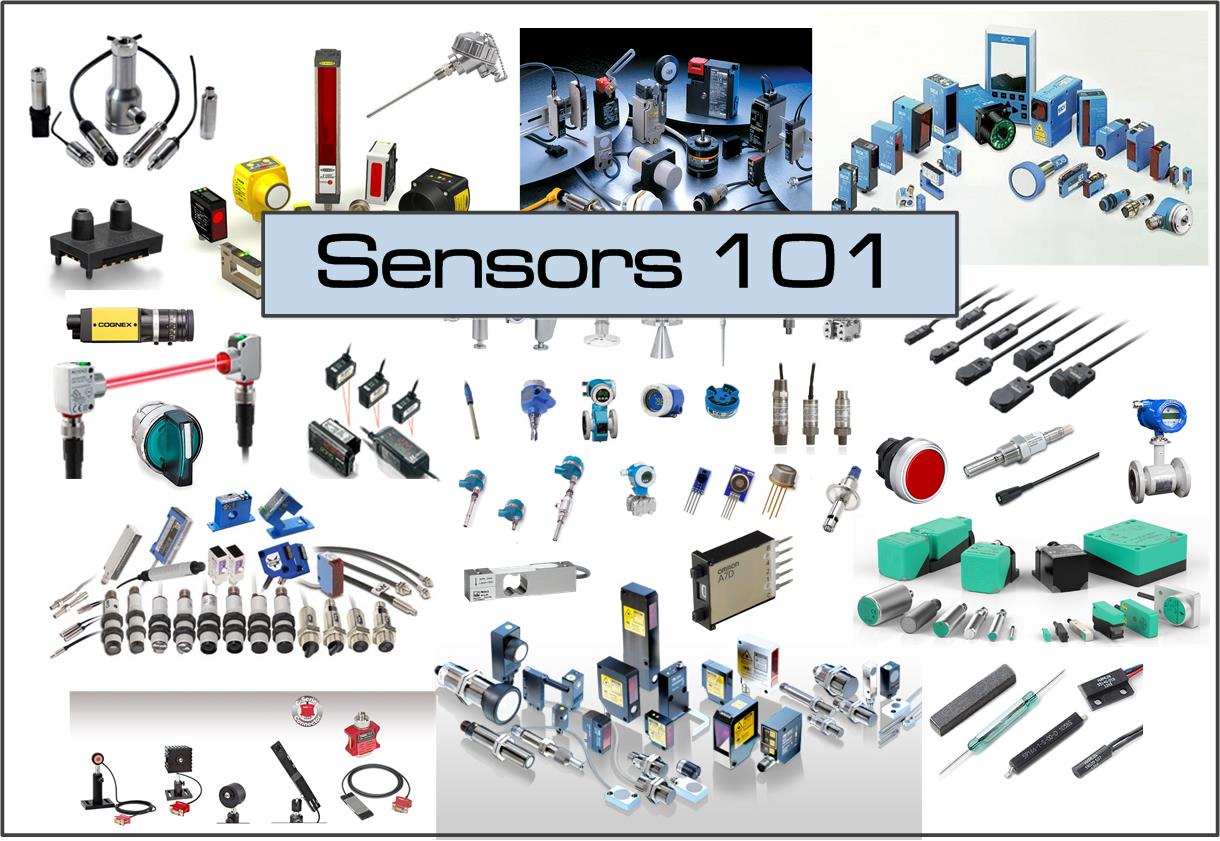Sensors 101 – Control System Inputs
In today’s post I’m going to ask you to think of sensors in a different way. Most engineers who are specifying equipment think of sensors as discrete or analog devices, proxes or photoelectrics, flow or pressure sensors, thermocouples and the like. If asked to classify them into categories, they might say analog and digital, machine level or process control, optical or inductive.
There is another way to think of sensors also; as any physical input to a control system. If you broaden your thinking as to what constitutes a sensor, it opens up a lot of new possibilities. Is a pushbutton a sensor? Sure, it detects an operator’s decision to do something. How about a relay? Yes, it provides the status of some device or machine condition.
I’d also like to suggest that another way to categorize sensors other than the method they use to detect things is by their function. Sensors pretty much all fall into two categories; those that detect the condition of the machine or system (cylinder switches, MCRs, encoders, some photoeyes and vibration sensors), or those that detect or evaluate the parts or substance that the system processes (flow and pressure sensors, machine vision and discrete part presence detectors).
If you think of sensors in this way, you will realize that not all sensors fall into neat categories like analog and digital. A vision system is a good case in point; the actual method of detection involves optics and millions of individual pixels. The actual interface to the control system may be a simple digital pass/fail signal, or involve sending strings of data that need to be decoded. But you certainly need to understand all of the details of the complex topic of machine vision before specifying it.
Another example is encoders and resolvers; the data may consist of discrete pulses or a sinusoidal analog signal, but you can’t simply feed these signals into your digital and analog input cards. These factors need to be taken into account when deciding what kind of hardware is specified; not only the sensor itself, but also the complexity and cost of the interface with your control system.
Thermocouples are also analog, but you can’t simply wire them into an analog card. A thermocouple card actually contains an algorithm that knows what kind of response curve goes with the type of thermocouple selected (for instance J, K, R, T, etc.). Not only that, but you can’t simply wire your thermocouple into a standard terminal block and run regular copper wire back to the card. Since a thermocouple is simply two dissimilar types of metal, you will actually be creating new thermocouples in series with your original one.
Here are some other oddball sensors I have dealt with on the past that are off the beaten path:
Eddy Current Tester: An inductive probe inserted into a machined hole to determine if it had been threaded.
Capacitive Ion Leakage Probe: a charged probe and plate placed on the opposite sides of a piece of plastic to determine if a pin sized hole actually allowed ions through to the other side.
Mass Spectrometer: A customized spectroscopy system intended to detect the presence of a deadly nerve agent.
Ultraviolet Camera: A machine vision application where we actually coated rubber gaskets with an ultraviolet ink to detect if raised areas had been molded correctly. * A very messy operation – I have a much better solution for this now, 17 years too late!
Floating Rocker Arm Cover Measurement: A system with independent LVDTs that calculated the intercept of an imaginary plane to determine if a rubber gasket had been mounted correctly.
Ultrasonic Paint Level Detection: Only oddball because the application had to be intrinsically safe.
Back when I started my career there was no internet, so educating yourself on sensors required talking to vendors, attending trade shows, and reading catalogs. Now the resources are easily accessible online, but of course the technology has changed along with the times. As part of my early post-college training I was fortunate to attend some excellent manufacturer training at Allen-Bradley, Omron, Pepperl+Fuchs, Tri-Tronics and more. It was very useful to actually connect and test all of the latest devices and talk to some of the designers. There are still some opportunities to do this at some of the trade shows, but where there used to be four or five shows a year just in my state, now there are just a few big national ones.
Over the next year, I am building a pretty comprehensive training center here near Nashville. Part of the intent is to teach both my custom PLC course and Automation Training’s classes, but also to create courses concentrating on pneumatics, machine vision and sensors. A big part of all of these new classes is to allow students to get their hands on the components and learn how they all work together. Whether the focus is on troubleshooting existing equipment or designing new systems and machines, understanding how all of these sensing devices work together with your control systems is an important part of a good well-rounded education.
* For more posts on Sensors, check out the tab at the top of this page!


0 Comments on “Sensors 101 – Control System Inputs”